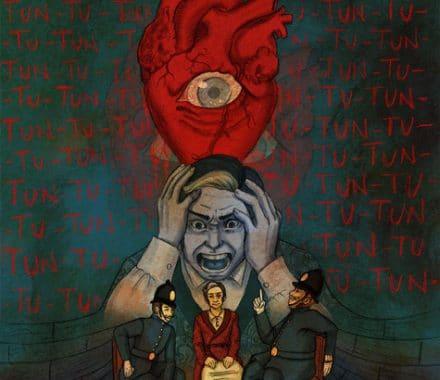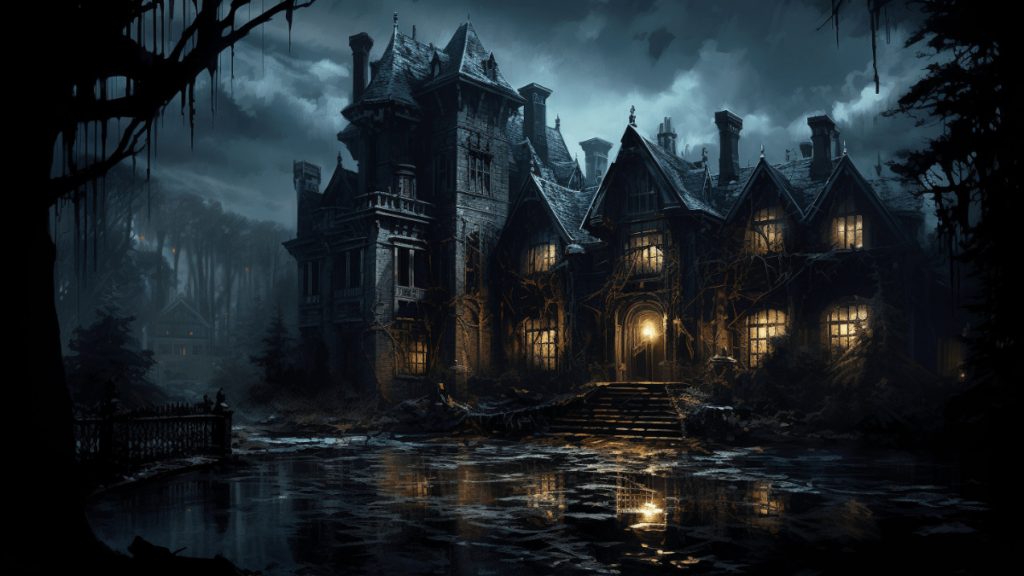The unreliable narrator is a defining feature of American Gothic literature, a narrative technique that plays with readers’ perceptions and keeps them in suspense. By weaving doubt into the very fabric of the story, authors use unreliable narrators to blur the line between reality and illusion, forcing readers to question the truth behind the characters’ words and actions. This technique not only heightens the tension but also reflects deeper themes of psychological instability, moral ambiguity, and the anxieties of the human mind—core elements of the American Gothic tradition. From Edgar Allan Poe to Shirley Jackson, American Gothic writers have used unreliable narrators to push the boundaries of narrative structure, creating stories where the truth is elusive and reality is often as terrifying as the supernatural.
The Nature of the Unreliable Narrator in Gothic Tradition
The concept of the unreliable narrator in Gothic literature, and particularly in its American form, is rooted in the genre’s fascination with the darker aspects of the human psyche. Gothic narratives often delve into characters who are morally ambiguous, mentally unstable, or subject to extreme emotional states—conditions that create a fertile ground for the unreliable narrator. These characters may misinterpret events, lie to themselves or others, or suffer from mental illnesses that skew their perception of reality. By narrating the story through their perspective, the reader is drawn into a world where truth becomes subjective and distorted, mirroring the chaotic inner landscapes of the narrators themselves.
In the context of American Gothic literature, unreliable narrators serve to heighten themes of isolation, paranoia, and fear of the unknown. Often, these narrators are trapped in decaying, haunted settings, much like their European counterparts, but with a distinctly American twist: the psychological and moral decay mirrors the unravelling of a young nation grappling with its identity and history. Whether the story unfolds in the eerie wilderness, a crumbling mansion, or the confined space of the narrator’s mind, the unreliable narrator becomes a crucial vehicle for expressing the genre’s characteristic ambiguity and existential dread.
Edgar Allan Poe and the Prototype of the Unreliable Narrator
No discussion of the unreliable narrator in American Gothic literature would be complete without acknowledging Edgar Allan Poe, a master of the form. Poe’s narrators, often plagued by madness, obsession, or guilt, present their distorted perspectives with such conviction that readers are immediately immersed in their unsettling worlds, only to gradually realize that they cannot trust what they are being told.

In ‘The Tell-Tale Heart’ (1843), Poe gives readers a narrator who insists on his sanity, yet every word he speaks reveals his growing madness. The story opens with the narrator passionately proclaiming, “True!—nervous—very, very dreadfully nervous I had been and am; but why will you say that I am mad?” His fevered repetition and disjointed reasoning only serve to convince the reader of his unstable mental state, even as he attempts to rationalize his murder of an old man. The narrator’s warped sense of reality, driven by his obsession with the old man’s vulture-like eye, becomes the lens through which the story unfolds. As readers, we are drawn into his paranoia, unsure of where truth ends and delusion begins. By the time the narrator’s guilt manifests as the phantom beating of the old man’s heart, the boundary between real and imagined horror has completely disintegrated.
Similarly, in ‘The Black Cat’ (1843), Poe presents another narrator who spirals into madness, driven by guilt and alcoholism. His rationalizations for his increasingly violent actions—culminating in the murder of his wife—are laced with contradictions, leaving readers to question whether supernatural forces or his own inner demons are responsible for the story’s events. Poe’s use of unreliable narrators in these stories not only creates psychological suspense but also forces readers to confront the moral ambiguity and instability of the human mind.
Ambiguity and Reality in Henry James’ ‘The Turn of the Screw’
Henry James’ novella ‘The Turn of the Screw’ (1898) is another cornerstone of American Gothic literature that masterfully uses the unreliable narrator to create ambiguity and suspense. The story is narrated by a governess who becomes convinced that the two children in her care are being manipulated by the ghosts of former servants. However, James leaves it deliberately unclear whether the ghosts are real or figments of the governess’s imagination, a result of her growing paranoia and obsession.
The governess’s account is riddled with inconsistencies, and her increasingly frantic behaviour casts doubt on her reliability. Her deepening anxiety mirrors the isolated and oppressive atmosphere of the remote country estate where the story is set. As readers, we are left to decide whether she is a victim of supernatural forces or whether her own psychological instability is driving her to misinterpret innocent behaviour and project her fears onto the children. This ambiguity—the tension between the supernatural and the psychological—lies at the heart of Gothic fiction, and James’ use of an unreliable narrator brilliantly sustains the suspense throughout the story.
‘The Turn of the Screw’ exemplifies the power of the unreliable narrator in Gothic literature, not only to evoke fear but also to explore deeper psychological and moral questions. The governess’s unreliability forces readers to grapple with their own perceptions of reality and to confront the possibility that the most terrifying horrors may come not from the supernatural but from within the human mind.
Shirley Jackson and Psychological Unreliability
Shirley Jackson’s ‘We Have Always Lived in the Castle’ (1962) presents a different kind of unreliable narrator—one whose detachment from reality and fixation on control create an eerie and unsettling atmosphere. The story is narrated by Merricat Blackwood, a young woman who lives in isolation with her sister Constance after most of their family is poisoned. As the narrative unfolds, Merricat’s perspective dominates, with her strange rituals, obsessive thoughts, and fantasies of power creating an unsettling tone.
Merricat’s narration is filled with contradictions and omissions, and her childlike voice contrasts sharply with the dark reality of the story. Her unreliability as a narrator becomes increasingly clear as the novel progresses, particularly in her description of the family’s past and the events leading to their isolation. Merricat’s inability or refusal to confront the full truth of what happened creates a haunting sense of dread, as the reader must piece together the reality behind her cryptic narrative. Jackson uses Merricat’s unreliable voice to explore themes of guilt, repression, and the breakdown of familial and social bonds, placing the reader in the uncomfortable position of navigating between sympathy for her and horror at her actions.
The Unreliable Narrator and Moral Ambiguity
In American Gothic literature, the unreliable narrator is often used not just to create suspense but to explore moral ambiguity. This technique allows authors to delve into the complexities of guilt, responsibility, and the darker impulses of the human soul. The narrator’s unreliability forces readers to question their own moral judgments and confront uncomfortable truths about human nature.
For example, William Faulkner’s ‘As I Lay Dying’ (1930), though not strictly Gothic, features multiple unreliable narrators whose differing perspectives highlight the disintegration of a family in crisis. Each family member offers their version of events, coloured by personal bias, misunderstanding, or emotional turmoil, creating a fragmented narrative that reflects the instability and decay central to Southern Gothic fiction. Faulkner uses this technique to blur the line between truth and perception, leaving readers to wrestle with the moral complexities of the characters’ actions.
The unreliable narrator is a cornerstone of American Gothic literature, a tool that heightens suspense, deepens psychological complexity, and challenges readers’ perceptions of reality. By filtering the narrative through the skewed perspectives of characters who are morally conflicted, mentally unstable, or trapped by their fears, authors like Edgar Allan Poe, Henry James, and Shirley Jackson create stories that leave readers questioning the nature of truth and the limits of the human mind. In these Gothic tales, the most frightening monsters are often those born of internal turmoil, making the unreliable narrator a perfect vehicle for exploring the anxieties and ambiguities that define the American Gothic tradition.
–Silviya.Y
